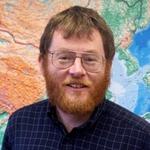Event Recording:
Volcanic eruptions can be very destructive and have significant economic impact. However, active volcanoes are also a source of geothermal energy, and are used to produce heat and electricity in a number of locations around the world. Understanding the risks of a volcanic eruption, and developing geothermal energy resources, requires information about where molten rock and hot water is located underground.
This question can be addressed by integrated geological, geochemical and geophysical studies. In this presentation, Prof Unsworth will describe one of the leading geophysical techniques that is used for looking inside volcanoes. Magnetotellurics is a geophysical technique that uses naturally occurring radio waves to map the distribution of molten rock and hot water. He will present examples of how this method can be used in combined studies of volcano hazards and geothermal energy development from Antarctica, Canada, Iceland and South America. When geophysical studies are combined with information from geology and geochemistry, the resulting subsurface models become more reliable. This can provide improved understanding of future eruptive behaviour and reduce the economic uncertainty of geothermal energy development.

Professor Martyn Unsworth
Visiting Fellow, Oxford Martin Programme on Rethinking Natural Resources (ReSET)
Professor Unsworth is Professor of Geophysics at the University of Alberta. He is the world’s leading expert in the application of magnetotelluric (electrical resistivity) methods to imaging Earth structure including applied studies on mineral and geothermal exploration, and research in volcanology. His research has included magnetotelluric studies of seven active volcanoes around the world and helped to delineate regions of magma and fluid storage in the subvolcanic crust. This expertise is highly complementary to the Oxford Martin Programme on Rethinking Natural Resources (ReSET) that is targeting the distribution of metal-bearing, saline geofluids beneath the Soufrière Hills Volcano on the Caribbean Island of Montserrat.
Keep in touch
If you found this page useful, sign up to our monthly digest of the latest news and events
Subscribe